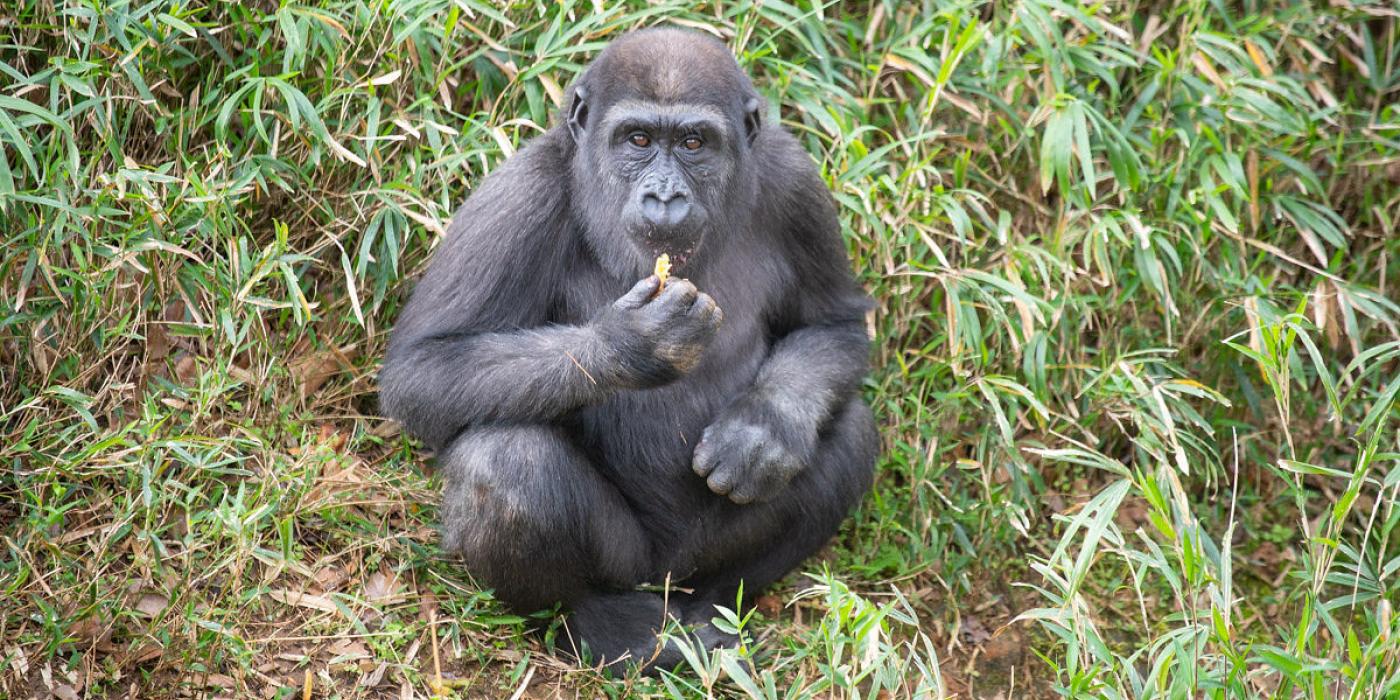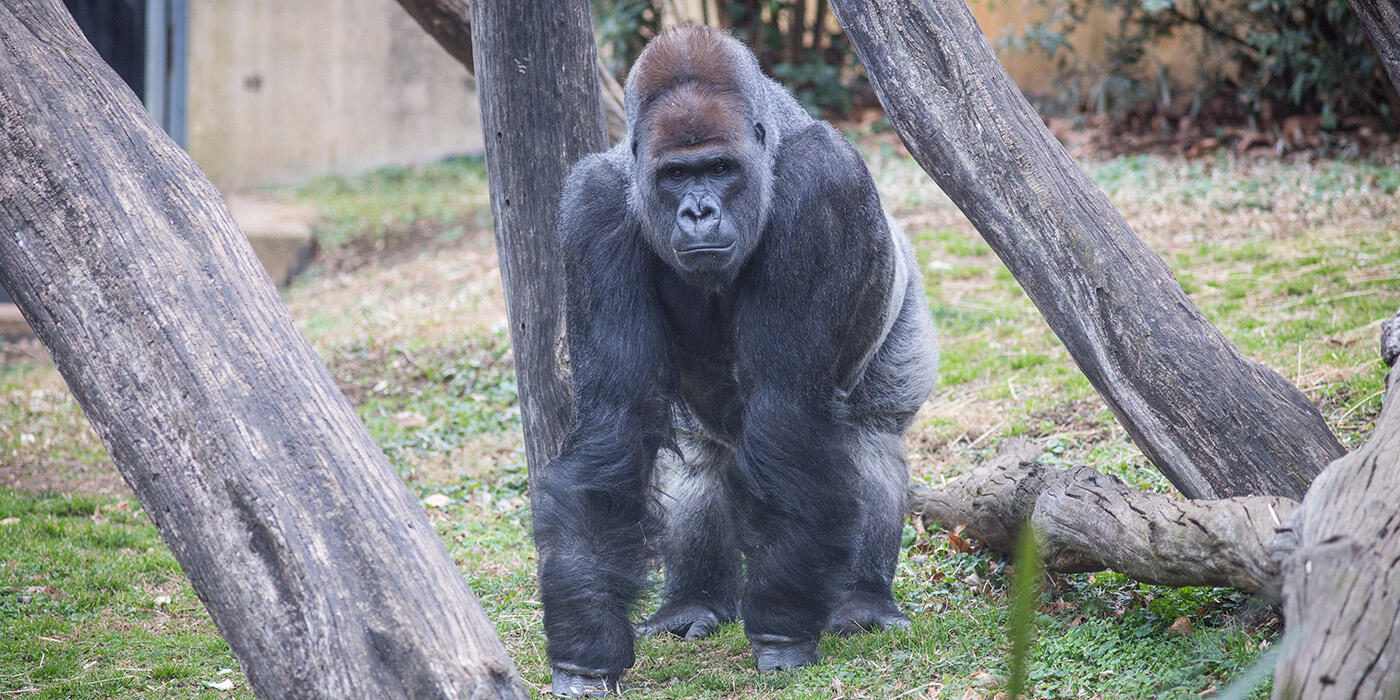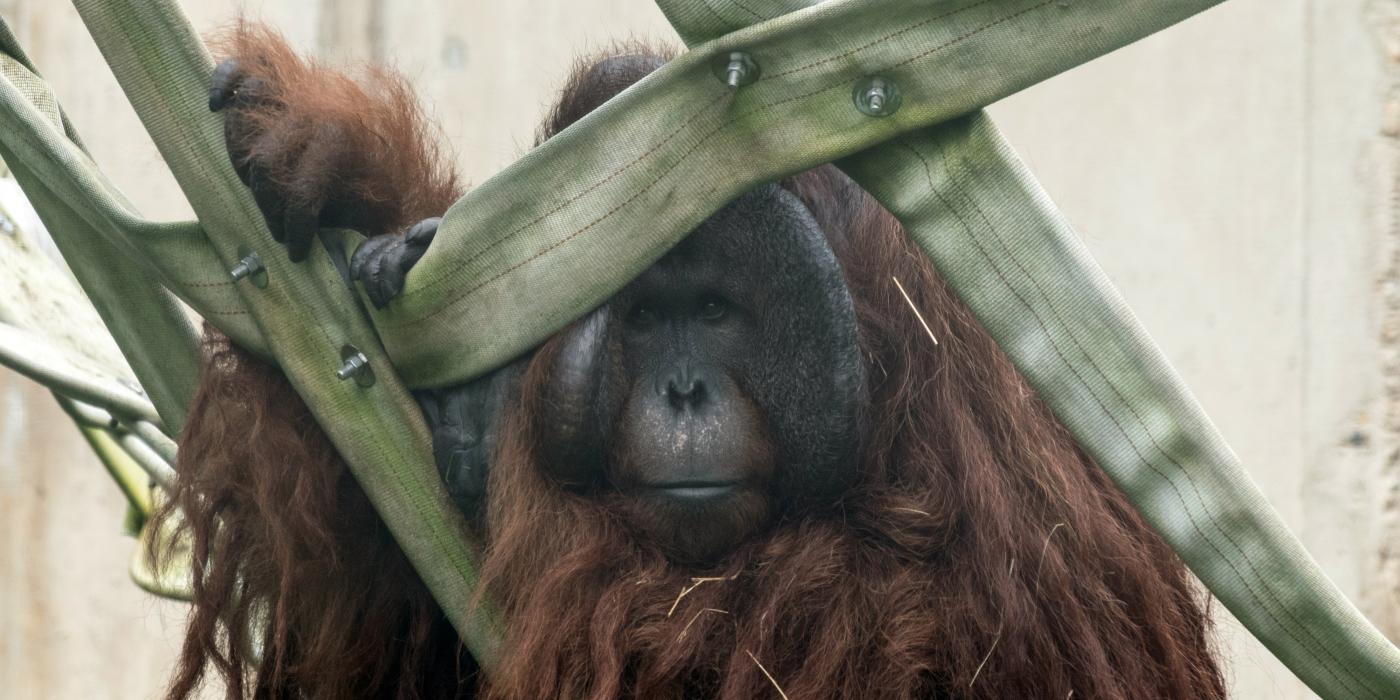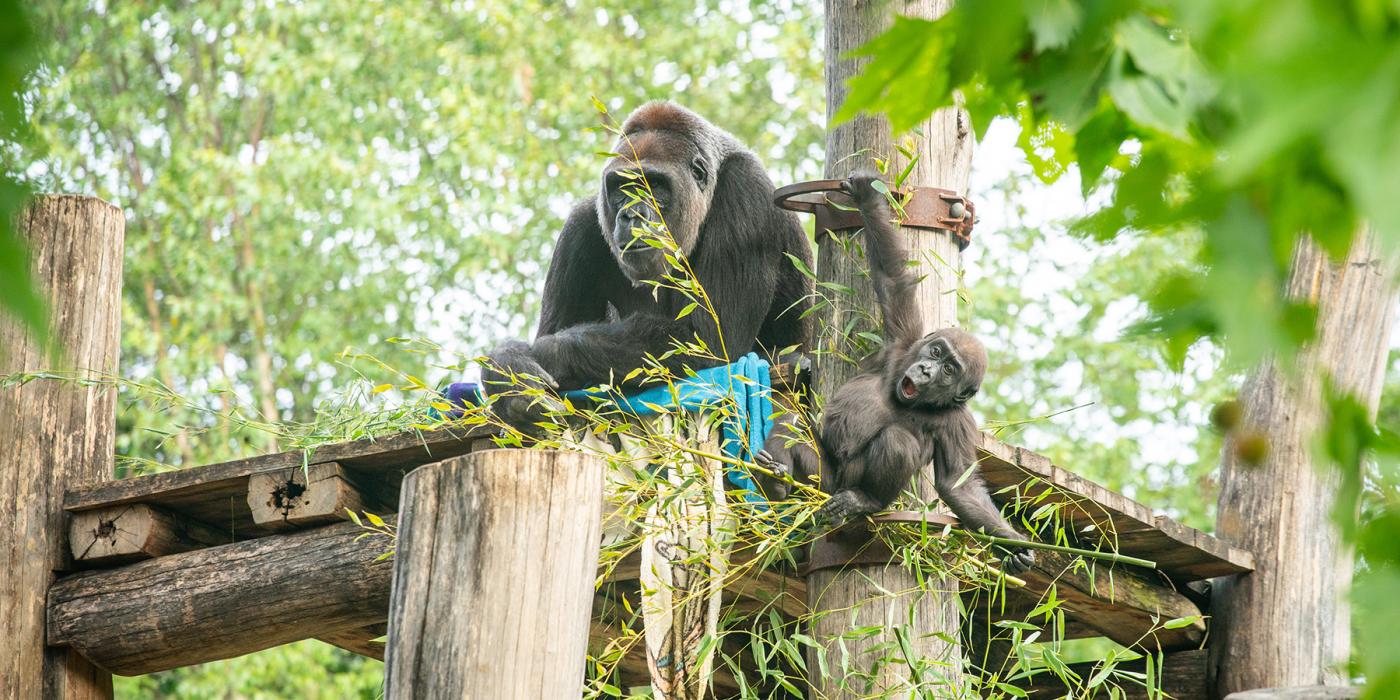Happy 3rd Birthday, Moke!
Today, our boisterous, intelligent and loving western lowland gorilla Moke turns 3 years old! As the son of silverback Baraka, Moke has enjoyed an elevated status within the troop since his birth. This year, however, he has truly come into his own.
Moke seems to believe he is the toughest gorilla at Smithsonian’s National Zoo! He chases us as we move along the keeper walkway, beats his chest, stomps his feet on the ground and throws enrichment items in every direction.
When it comes to toys and puzzle feeders, he has learned that competition among the troop is fierce. The others don’t save enrichment for him or allow him to keep the items, even if he picked them up first. If he really wants something, he’s got to hang on to it tight and run! Luckily, he seems to have boundless energy.
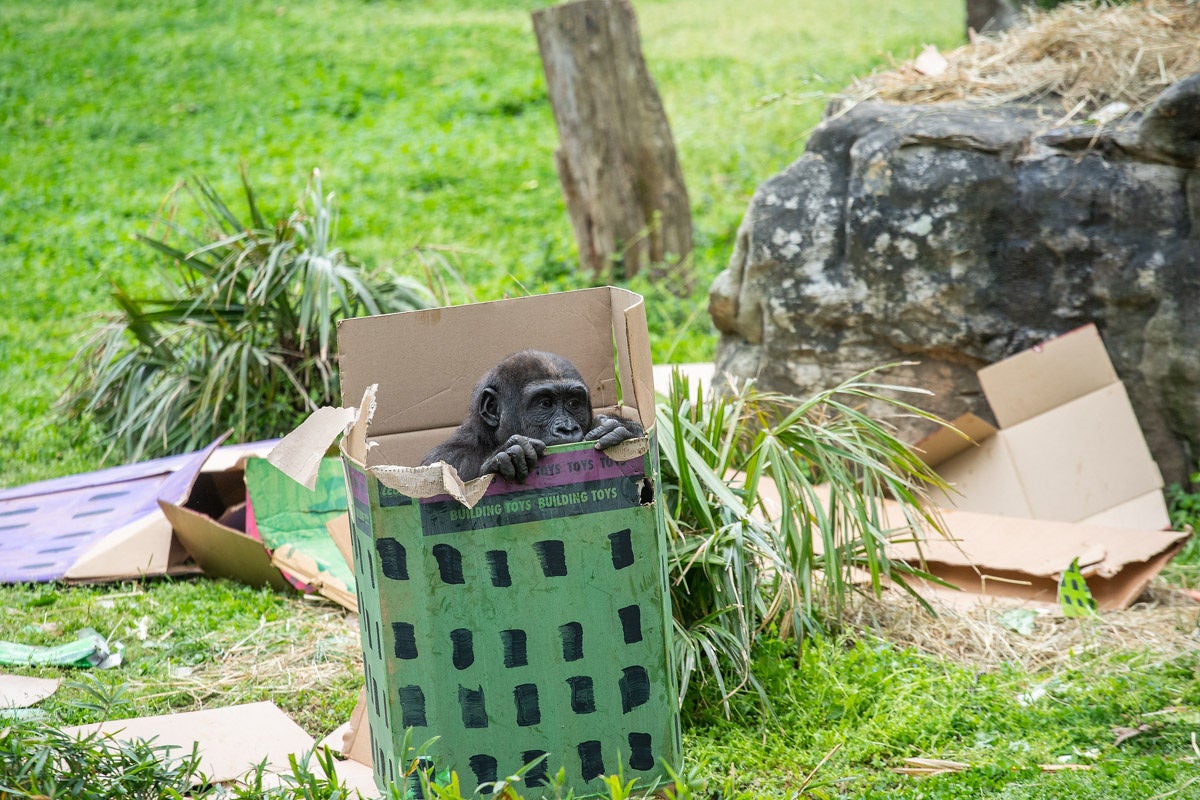
Moke’s burly and energized disposition took an interesting turn recently when he found a new way to play with us. When Moke sees a keeper approaching, he grabs a fistful of hay. He waits for the opportune moment—just as we’re passing by—then throws the hay right at our heads! At other times, Moke will watch us clean. Then, when our task is nearly complete, he will drop a new pile of hay for us to sweep up. These good-natured “pranks” are followed by lots of laughs—low, breathy, staccato vocalizations. Moke will do this over and over again if we stick around and indulge him.
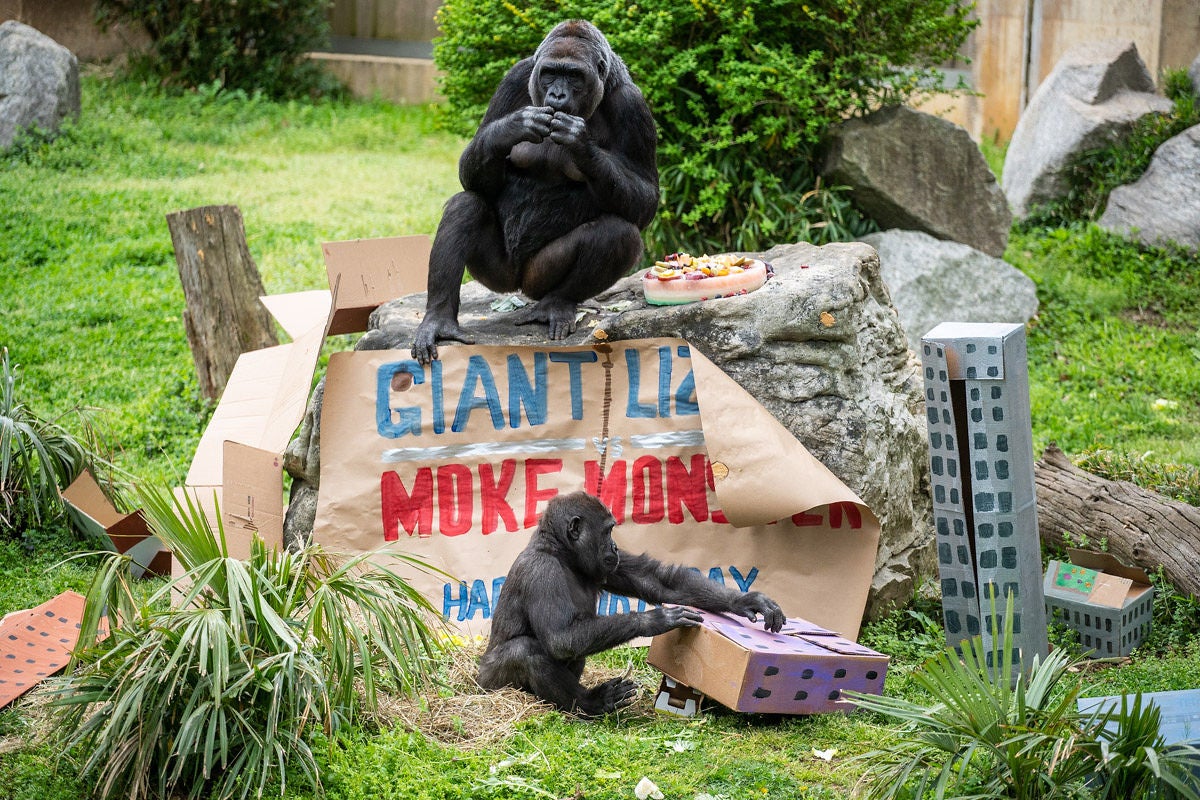
Moke’s mother, Calaya, has been giving him space to be his own gorilla. Nowadays, she will move between enclosures without him (especially when it’s time for breakfast), and we often see her relaxing while Moke runs around the habitat. She seems to be teaching him to be independent. When he was little, she used to carry him on her back and bring him over to check out items of interest, usually enrichment or food. Now, she lets him “discover” these things on his own time.
When it is time to sleep, Calaya and Moke will snuggle up together in a nest. However, mom is responsible for all the construction. I have not seen him contribute to the nest building process. If anything, he throws the hay everywhere!

While Calaya is enjoying her “mom time,” their 12-year-old troop mate Kibibi steps in to entertain Moke. Of all the gorillas, she plays with Moke the most. The pair are thick as thieves; they chase each other, wrestle and snuggle together often. On occasion, our two youngest gorillas will ignore us when we ask them to move between enclosures because they are having too good a time!
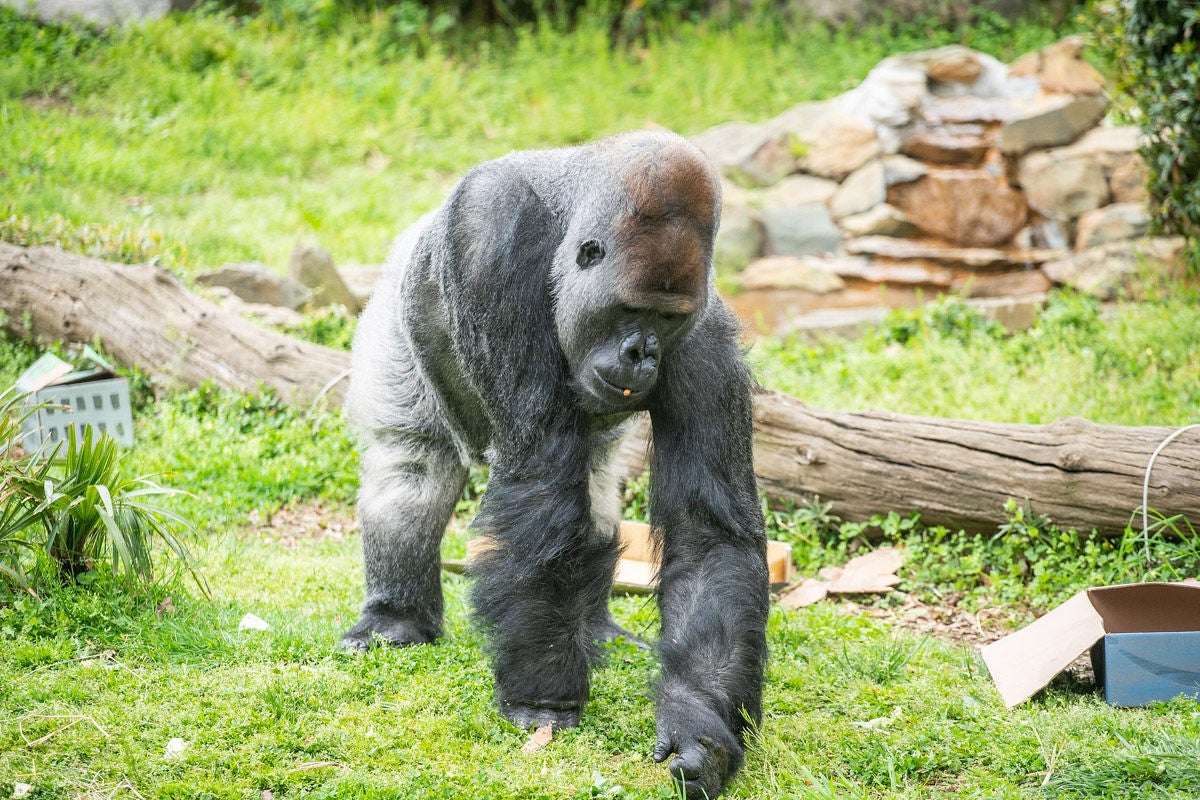
As Moke has grown, we have seen him play with Baraka more often, too. He seems to look to his father as an example of how to be a male gorilla. Moke often imitates Baraka’s displays, seemingly showing off what a big, strong boy he is. When Baraka is done playing, however, he will give Moke a quick (but gentle) swat to signal that playtime is over. Baraka is still the boss of the troop, after all!

Moke could learn a thing or two from Mandara—Kibibi’s mother and Baraka’s foster mother—about how to be socially savvy. She knows how to navigate the complex social dynamics in the troop. Hopefully, her skills in this area will help Moke handle more grown-up social relationships as he gets older. For now, though, he seems to view everyone as a potential playmate. When Mandara comes inside from the outdoor habitat, Moke jumps on her to initiate a play session. Kids will be kids!
Those of you who have followed our previous #GorillaStory updates know that we train our primates to voluntarily participate in their own healthcare. For example, Moke is trained to climb on a scale so we can monitor his growth. At his latest weigh-in, he tipped the scales at 61 pounds—and counting! On average, he has been packing on three pounds a month.
Moke’s growth is especially remarkable considering our 4.5-year-old Bornean orangutan, Redd, currently weighs 35 pounds. In general, gorillas grow much more quickly than orangutans do, and their builds are more muscular. Since orangutans live in trees, their lanky builds help them deftly navigate the forest canopy.
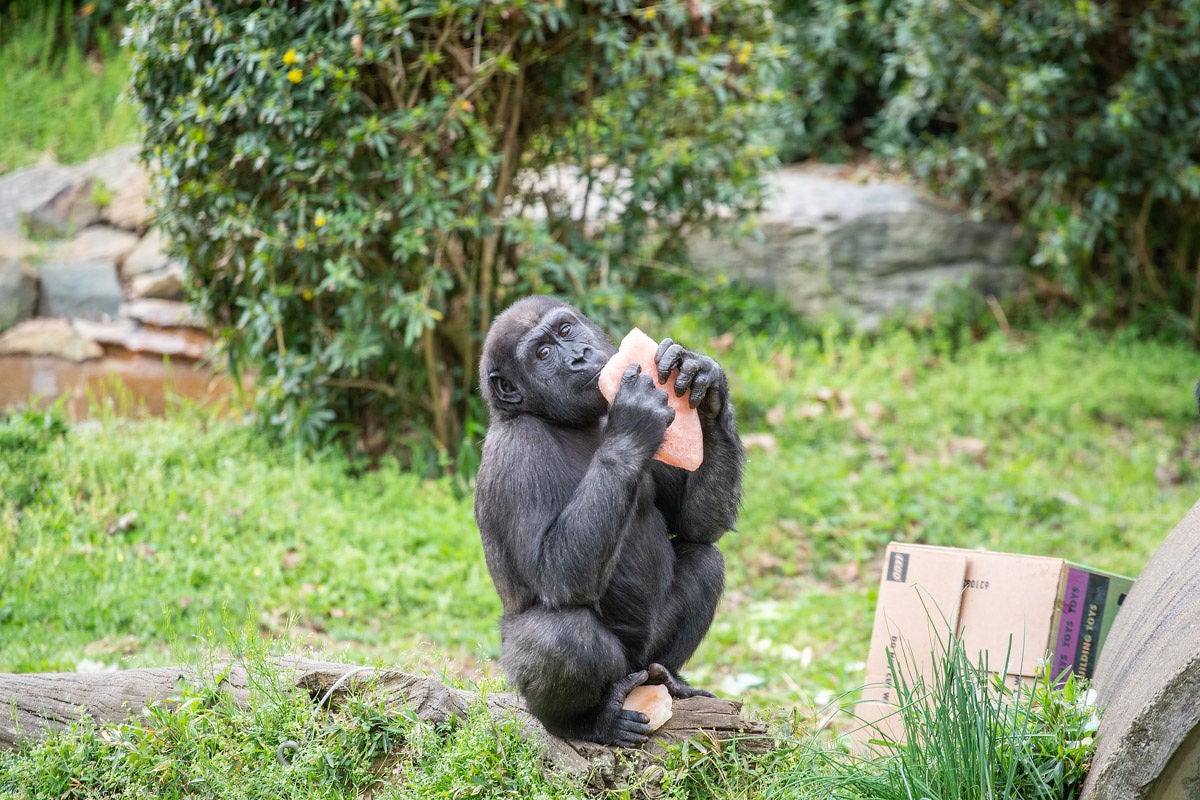
Moke’s biggest training accomplishment this year was voluntarily participating in cardiac ultrasounds. Great apes, including humans and gorillas, can be susceptible to heart disease. Having Moke participate in this training now enables us to get regular heart rates on him while he is awake, thereby minimizing the need for anesthesia. It also means we can continue to monitor his heart health as he gets older.
On our cue, Moke presses his chest up against the mesh and allows a probe with ultrasound gel to be maneuvered around his heart. He receives lots of praise and some mixed nuts for his participation. Moke is a phenomenal trainee and shows great intelligence and aptitude. He picks up behaviors very quickly—faster than some of the adults!
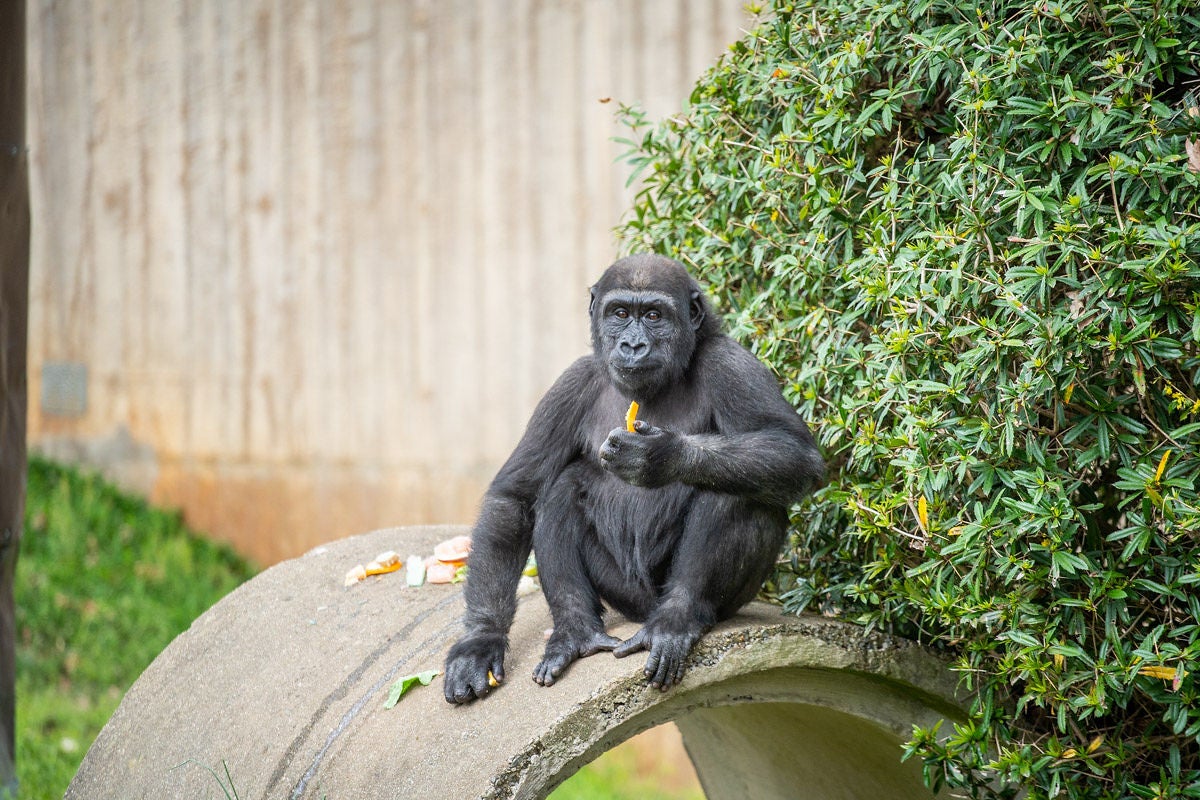
Our team is fortunate to have such a remarkable and endearing gorilla as Moke. The International Union for Conservation of Nature considers his species critically endangered in the wild due to ongoing threats from the commercial bushmeat trade, the Ebola virus and the spread of logging, which has increased gorillas’ vulnerability to poaching.
I encourage you to join in our celebration of Moke’s birthday by taking action to help his counterparts in the wild. One simple action you can take is to ensure your purchases are made from sustainably harvested wood and palm oil. By doing so, you help conserve gorilla habitat.
Another simple way to help is to recycle your old electronics, including cell phones, laptops, MP3 players, tablets, game consoles, hearing aids, and GPS navigation systems. These devices contain an ore that is mined in areas adjacent to where gorillas live. By recycling your old phones at appropriate centers, you are ensuring that the ore can be reused in future phones, reducing the demand to mine.
Last but not least, visit and support zoos like ours that participate in the Association of Zoos and Aquariums’ Species Survival Plan and Saving Animals From Extinction (SAFE) programs, which work to conserve this species both in zoos and in the wild. When it is safe for Smithsonian’s National Zoo to reopen, we hope that you will make a special stop at the Great Ape House to greet our growing gorilla, Moke, and his troop!
Love Moke? Read the latest updates on him and all of the Zoo’s gorillas here. Our whole team works diligently to care for our animals and keep you connected to the Zoo. With your support, our conservation mission continues. If you can, please join us in this important work by making a donation today. On behalf of the animals we care for and work to protect: thank you.
The Smithsonian’s National Zoo is temporarily closed to help prevent the spread of COVID-19.
Related Species:

